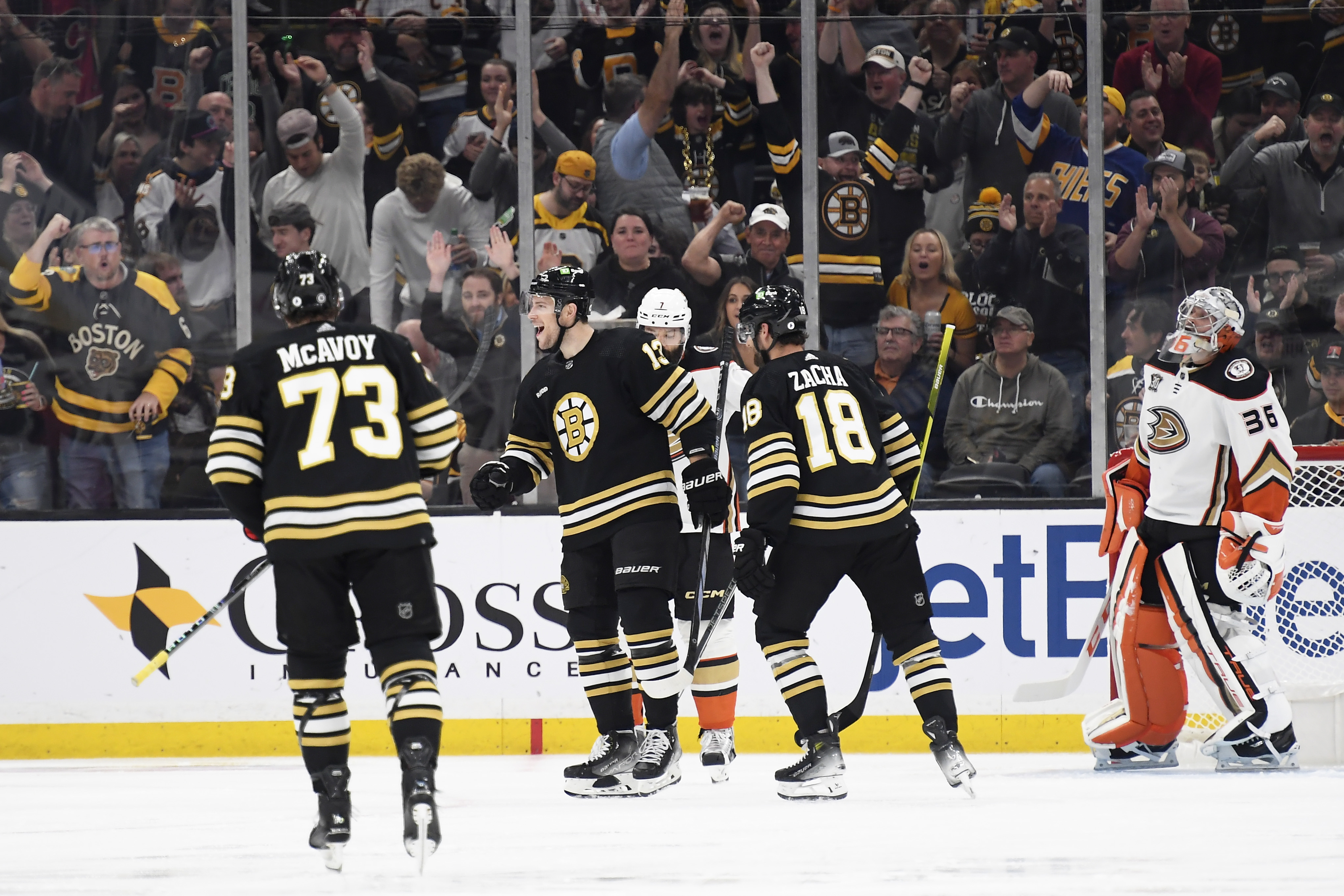
The Ups and Downs of Boston's Special Teams
The Boston Bruins boast the best penalty kill in the NHL, but their power play is lagging behind.
 Bob DeChiara-USA TODAY Sports - The Ups and Downs of Boston's Special Teams
Bob DeChiara-USA TODAY Sports - The Ups and Downs of Boston's Special TeamsA major key to any hockey team’s success is special teams performance, and the Boston Bruins are no exception.
Last year’s 65-win Bruins made it one of their many calling cards, with an above-average power play (22.2% – 12th in 2022-23) and the top penalty kill (87.3%) playing a significant role in their success.
This year, it’s more of the same. Well, at least for one unit.
Through seven games, Boston has the best-performing penalty kill in the NHL, which has conceded just one goal on 30 opportunities (96.7%). The power play, meanwhile, slots in at 18th in the NHL with a 16% conversion rate (4-for-25).
Diving into NHL EDGE analytics, the Bruins power play possesses the puck in the offensive zone 59.1% of the time, which is a full percentage point above league average (58.1%) and ranks in the 59th percentile. The opportunities are there, they just haven’t been converting.
On the other hand, it’s easy to see why the penalty kill is at the top of the league. The puck spends 52.6% of the time in Boston’s defensive zone during the penalty kill, which puts them in the 96th percentile (58.2% league average).
It’s early enough in the season where every team’s power play percentage will be propped up or diminished by small sample size, so it’s premature for alarm bells to be going off, especially for a team with the best record in the Eastern Conference.
At the same time, entering their 4-3 overtime loss to the Anaheim Ducks on Thursday, the Bruins failed to score on their previous 12 power play opportunities, which provoked the question of what needed to change.
“Puck movement and creating slot shots,” Bruins coach Jim Montgomery said on Thursday morning. “We’re just not moving the puck efficiently and quickly enough to beat the sticks on the penalty kill.”
Boston opened the season with James van Riemsdyk playing at the net front on the top power play unit, and it started out well; two of van Riemsdyk’s three goals this season came on the power play. However, in an effort to find a new rhythm, Charlie Coyle was slotted in van Riemsdyk’s place against the Ducks.
They found a spark, at least for one shift. On their first power play opportunity on Thursday, the Bruins broke their futility streak to tie the game 1-1 at 1:41 of the second.
Coyle won the face-off and after the puck worked around from Brad Marchand to Charlie McAvoy down to David Pastrnak in the left circle, Pastrnak’s light shot-pass faked Anaheim goalie John Gibson and left the net exposed for Coyle, who tapped the puck in at the doorstep.
“I just go out there, try to win a face-off. That’s the main goal, and get possession,” Coyle said postgame. “Once I’m out there, just be a big body in front of the net. Yeah, I mean, that particular play [Pastrnak] found me, but just when I’m on the ice, that’s what I got to do first and foremost is face-offs.”
The Bruins had three more power play opportunities after Coyle’s goal, but failed to convert any of them. After taking a 3-1 lead late in the second period and taking it down to the final 1:55 of regulation, the Ducks scored twice with Gibson pulled for an extra skater to force overtime, where Mason McTavish completed a 2-on-1 rush with Leo Carlsson to secure the comeback win.
With the Bruins continued excellence playing short-handed, allowing two goals at 6-on-5 was a rare lapse for the group.
“Guys whiffing on pucks, guys trying to go for the open net instead of using the walls as an indirect to clear and get off the ice,” Montgomery said. “We could have extended our lead to four or five [goals]. We had many opportunities to do it, and we didn’t finish the game.”
With three home games coming up after a four-game road trip – all against Atlantic Division opponents – it will be worth monitoring how the Bruins and their special teams units perform after what we’ve seen through seven games.

